15 Unusual Animal Defense Mechanisms
Humans are the only species on earth capable of self-reflection and building
advanced tools and technology But when it comes to pure, unassisted
self-defense, there is not much we can do protect ourselves. Most animals have
clear defense mechanisms to protect against natural enemies. Rhinoceros, for
instance, have a very intimidating horn on their foreheads. Tigers have claws;
sharks have multiple rows of teeth. Some animals, however, have evolved with
special defenses that are far from the norm.
15) Horned Lizard
This defense mechanism is completely harmless yet absolutely terrifying. Most
species of horned lizards simply puff up their bodies to emphasize their horns
and look more challenging to eat. That alone works plenty of wonders, as most
predators do not wish to choke. There are a few species, however, that can shoot
blood from their eyes to frighten predators. The blood does not drip, or lightly
squirt; it shoots out up to five feet away from the lizard.
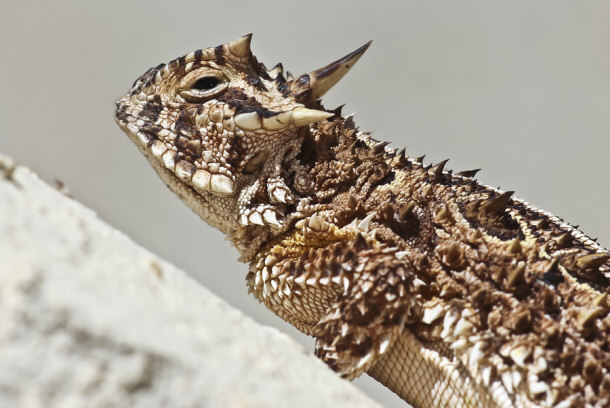
This would undoubtedly work on most predators, especially humans, who do not
like to see living things shooting out blood for any reason. Even scarier is
that they can aim the bloodstream wherever they please. Apparently the blood
works to both frighten predators and produce an unpleasant taste for picky
eaters. Many animals have evolved to avoid bad tastes, as they are often an
indicator of poison in nature.
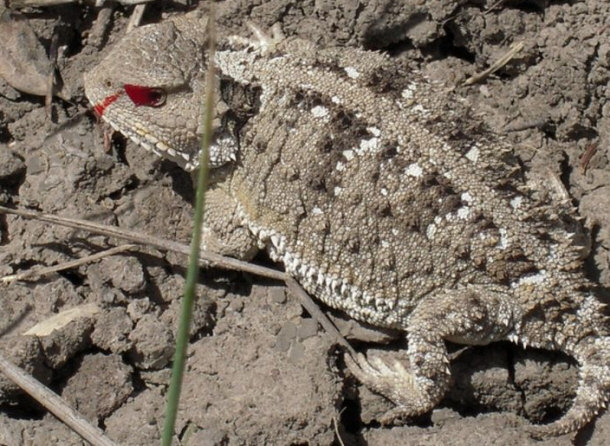
The one downside for the lizard is that predatory birds do
not seem to mind the blood at all (sight or taste), so the down-horned lizard
must use other tactics to keep birds at bay. The lizard will lower himself as
close as it can to the ground, so any bird will have a much harder time trying
to scoop him up. This method is quite effective for the great horned lizard as
well, but the blood mechanism gives a whole new meaning to "blood-shot eyes."
14) Pangolin
A pangolin is not a well-known animal unless someone happens to be from tropical
areas of Africa or Asia. It is a highly unusual mammal, covered in huge plated
scales and resembling a very heavily armored armadillo. Their meat is a popular
ingredient in many cuisines, and their scales have been used in various fashions
for hundreds of years. Pangolins have the ability, when threatened to curl up
into a ball and point out their spiky scales. It looks both unappetizing and a
little scary, plus the hard scales protect all the softer parts on a pangolin's
stomach.

The pangolin's spikes are made out of keratin, like human nails, and are the
only mammal that possesses this physical trait. The plates are very hard and
effective armor. On a grosser note, pangolins can also secrete a terrible smell
from their anus to put off predators. They cannot spray like a skunk though, so
things can walk near them without getting blasted. Pangolins do look funny, but
they are serious about protecting themselves. It may not be enough however, as
many pangolin species have already gone extinct. Deforestation poses a constant
threat to this animal, and no amount of armor can save them from the
environmental impact of humans on this planet.
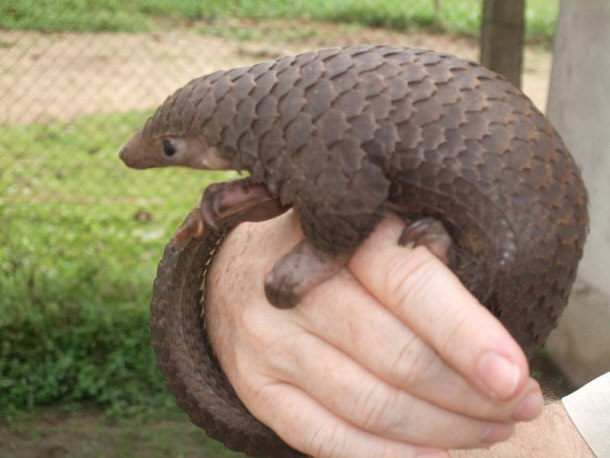
By Valerius Tygart (Own work) [CC-BY-SA-3.0 or GFDL],
via Wikimedia Commons
13) French Guiana
Termite
These termites are the ultimate selfless family members. When the termites grow
too old, they take up valuable colony resources and slow things down. These
senior citizens do not, however, become completely useless in their old age.
They have developed an evolutionary tactic to protect the rest of their nest.
Old termites in French Guiana have tiny blue spots on behind their heads. These
pretty spots contain crystals capable of explosion.
French Guiana Termite Nest:
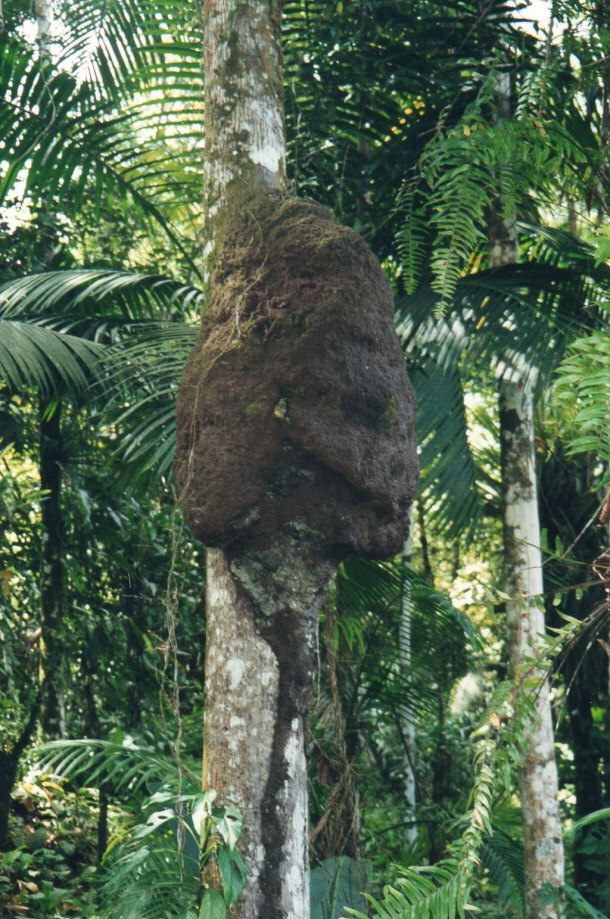
By Yannloicollivier (Guyane) [GFDL or CC-BY-SA-3.0-2.5-2.0-1.0],
via Wikimedia Commons
Yes, these termites suicide bomb themselves for the greater good and survival
of their colony. Even more ingenious is the fact that the crystals mix with
saliva from predators to poison and paralyze them. The crystals themselves are
not poisonous, but they mix with other materials to make a highly toxic
compound. They can save their entire colony in this manner. The termites that
have been working tirelessly their whole lives to build a successful colony are
constantly at risk from outside predators, and their elders can stop attacks
before the entire colony suffers. It is quite a gruesome self defense mechanism,
but the results speak for themselves.
12)
Potto
A potto is a primate from Africa that spends most of its life in the trees. It
is quite cute and fuzzy, and it sleeps in the leaves during the day. Because it
is nocturnal, it has very few natural predators to worry about. Most of the
animals that would hunt it are diurnal, meaning they are only awake during the
day, when the potto is sleeping. If something should attack it however, the
potto will be ready to strike.
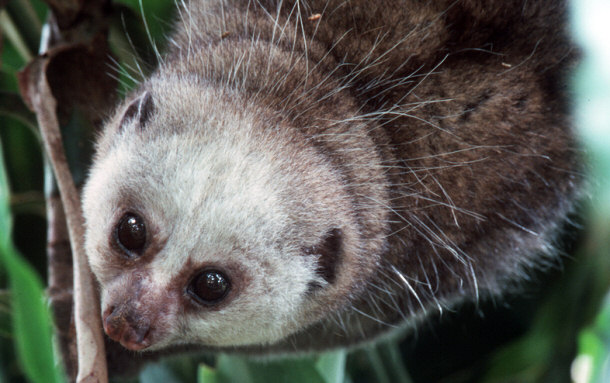
The potto has strange vertebrae that can poke out quite far under the skin.
Not at the bottom of their spines; that would be a tail. The potto has the
ability to tuck its head into its chest and stick out its top vertebrae. It will
then neck butt its opponent. It can move quickly in this manner and cause some
serious pain to an opponent. Another reason to watch out for this furry primate
is its bite. The potto's laced saliva will ensure that the bite gets inflamed
and irritated. They may look adorable, but they do not want to be messed with.
11) Pygmy Sperm Whale
There are three species of sperm whale that have teeth. The pygmy sperm whale is
one of these creatures. They are quite elusive, and we have only come to learn
about them through the study of ones that have been separated from the rest of
their species by being stranded on beaches. Pygmy sperm whales used to be
confused with dwarf sperm whales, but according to "K.S. Norris' Whales,
Dolphins, and Porpoises, the Smithsonian Institute" realized they were a separate
species in 1966. The pygmy sperm whale is about the same size as a large
dolphin.

Though teeth set it apart from other sperm whales, the pygmy sperm whale's
defense mechanism is something else very different and much stranger. It shoots
out a dark red stream of liquid from its anus when it feels threatened, which
would presumably scare predators away. Not enough is known about the species to
know how well this tactic works, but the species has survived thus far. So the
red liquid must do them some good. The red may be meant to resemble blood, or it
could be a warning color. Dwarf sperm whales also possess this odd skill.
Scientists also conjecture that the red fluid could be meant to simply confuse
enemies without meaning anything specific. This reaction is rare in mammals,
especially without a poison or a smell being involved. Hopefully scientists can
one day learn more about this mysterious species by observing pygmy sperm whales
in their natural habitat.
10) Skunk
Most of us know about skunks, though hopefully without having had to experience
them firsthand. Skunks deserve to be ranked with the other animals that defend
themselves in unusual ways. Fuzzy and dark with big white stripes, they are easy
to spot and important to avoid. Skunks do not like to be disturbed, and they
will do whatever they can to get rid of intruders. There is almost nothing more
effective to send off enemies than to completely disgust them, and skunks will
do just that if they feel frightened.
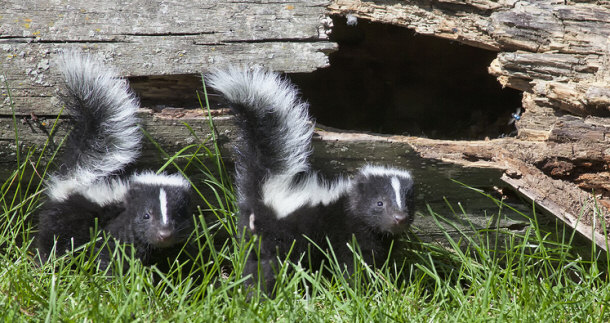
Anyone who has been unfortunate enough to surprise a skunk has been on the
receiving end of this animal's smelly defense tactics. When alarmed, a skunk
will promptly turn around, raise its tail and hose the unlucky intruder down
with a noxious-smelling liquid. Not only is the smell absolutely terrible, it
takes days to go away. No matter how many showers someone takes, a skunk smell
will remain until it is ready to dissolve away. Skunks may be cute, but stick to
watching Pepé Le Pew on TV rather than trying to see a real skunk. As far as
mating goes, good luck perpetuating the species when no female will come within
several feet of a sprayed animal. Predators are incredibly put off by skunk
smell, so skunks do not necessarily have to worry as much as other woodland
creatures out there.
9) Spanish Ribbed
Newt
Also called the Iberian ribbed newt and the sharp-ribbed newt, this Moroccan and
Iberian amphibian is known widely for its unusual defense mechanism. It has very
sharp ribs that can puncture through its skin on its sides and stick out. This
tactic is much more for show than for stabbing predators, and the ribs are not
harmful to humans, since they are so small. Newts mainly need to deal with
predators who live underwater.
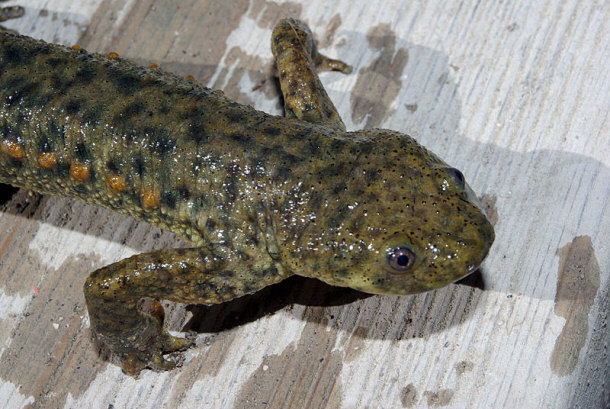
By David Perez (Own work) [GFDL or CC-BY-3.0],
via Wikimedia Commons
The ribs stick out through tubercles running down the newt's sides. It does
not harm the newt to enact this defense, and works quite well to repel predators
from this foot-long amphibian. Spanish ribbed newts rarely leave the pond,
except for when humans send them on space missions. Newts have been sent into
space multiple times to study microgravity and regeneration in amphibians when
in space. Incidentally, amphibians regenerate much faster in space than they do
on earth. Newts are popular space subjects because of the female newts ability
to hold active sperm for five months. They also develop very slowly, giving
scientists proper time to observe and record their growth when development is
sped up in space. Newts are great at defending themselves and helping humans to
explore microgravity.
8) Dormouse
When thinking of notable defense mechanisms, dormice are certainly not the first
creatures that pop into mind. They are characteristically very timid and small,
making them relatively easy targets for predators. They have cute little ears, a
round, tiny body, and big watchful eyes. Humans eat certain dormice as well.
Instead of bald, scaly tails, they have furry tails. They do not have many
evolutionary tools at hand in the advent of an attack by a predator, so
evolution has granted the dormouse one ace in the hole to allow it the chance to
escape, and that lies within their furry little tails.
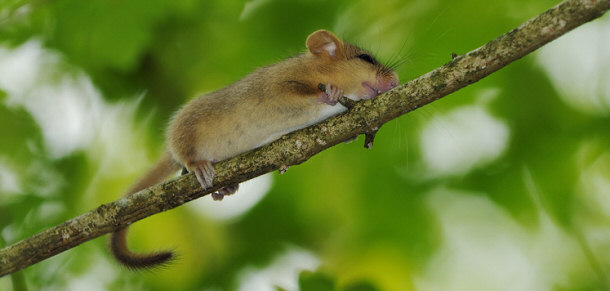
If something bites or grabs a dormouse's tail, the tail will come detached. This sort of defense mechanism is highly common in
lizards, such as the skink, but extremely rare in mammals. Unfortunately for the
dormouse, once it loses its tail, it cannot regenerate it. This is because the
tail is attached to the mouse with very loose skin. Once the skin is ripped and
the tail comes off, the mouse will gnaw off the extruding tailbones, since it
naturally knows that it cannot grow another tail. This defense may not be scary
or gross, but it is certainly unusual and has allowed many dormice out there
very narrow escapes at just the right moments.
7) Bombardier Beetle
There are over 500 species of bombardier beetles. They are named such because of
their peculiar defense mechanisms. While most beetles have none, other than
their very hard exterior, bombardier beetles have the ability to release a hot,
smelly, spray full of chemicals from their abdomen. When the upsetting spray is
ejected, a large popping sound occurs. If that does not
send enemies running in the opposite direction, nothing likely will be able to
save the threatened beetles out there.
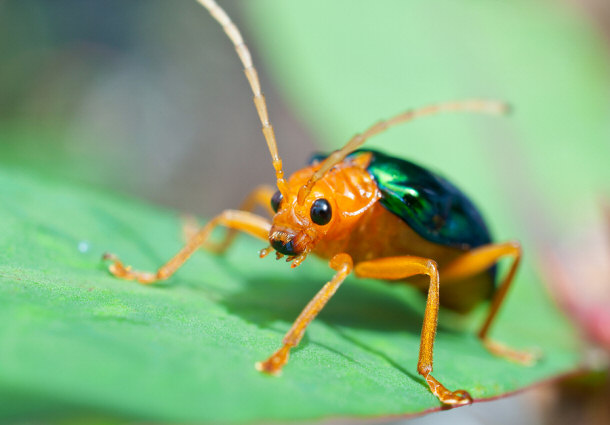
When the something proves to be a threat, chemicals in the bombardier
beetle's abdomen combine and heat up to almost the boiling point of water to
propel it out of the beetle towards the target. This stream of fluid can easily
kill insects and damage human skin. The creepy part is that this type of beetle
exists on every continent, excepting Antarctica. Creationists and supporters of intelligent design have used this
species as a manifestation of irreducible complexity, meaning that these beetles
are too advanced to have just randomly evolved over time. If anything,
bombardier beetles are an example of the most ideal forms of evolution. Such
defense mechanisms take thousands of years to form, and only a couple of species
have managed to grow something so sophisticated.
6) Malaysian
Exploding Ant
Some animals are called by their scientific names, and others are known by their
practical names. Instead of being referred to as Camponotus saundersi (its
proper Latin name), the Malaysian exploding ant is known by an important and
significant label for obvious reasons. Most ants are harmless, at worst giving a
few bites before we frantically brush them off, likely hurting them. Malaysian
exploding ants cannot do us much damage either, but they are more than willing
to sacrifice themselves in order to put up a serious fight. They can do a lot
more damage to attacking insects.
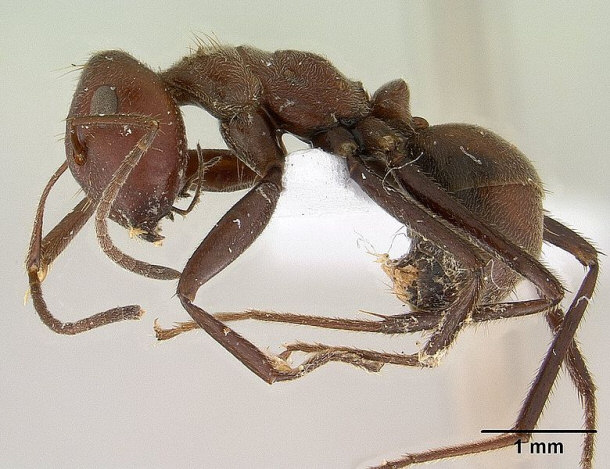
The photographer and
www.antweb.org,
via Wikimedia Commons
The Malaysian exploding ant literally has the ability to explode at will. This is always the
last line of defense, and though it does not do much to humans, the mechanism
has proved helpful in nature. If the ant senses that its number is up, it will
flex its abdomen to burst two pouches of poison in its sides. This poison causes
the ant to violently explode and send a sticky juice all over the area. The
liquid would smother and stop insect enemies in their tracks. This tactic often
saves these ants from other species of ants intruding on their territory. One
ant explosion can save a colony of hundreds of thousands of ants that they have
been working to build for generations. It is the ultimate display of
selflessness and teamwork.
5) Colorado Potato
Beetle
The Colorado potato beetle is a beautiful little bug, not to be confused with
its relative, the false potato beetle. It is banana yellow with five dark brown
stripes and enjoys spending its time infesting potato crops. It has proven quite
a threat to potato crops in the past, making itself the most destructive pest in
American potato crop history. Because of its extreme affinity for potatoes,
potatoes have evolved to release poisons that eradicate them as a threat to
valuable food resources. The Colorado potato beetle's defense is nothing like
shooting out poison or exploding; this beetle simply evolves on the spot, as
necessary.
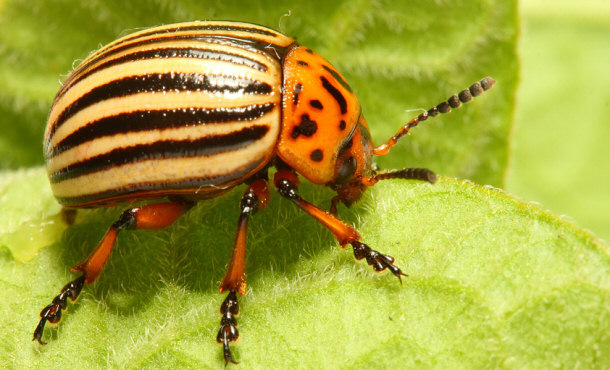
A potato releases proteinase inhibitors that damage
insects' digestion systems when the insects attack. Instead of dying off like
many insect species would, the potato beetle reacts by adapting the make-up of
its proteinases involved in digestion. This is a highly remarkable reaction that
is extremely rare in nature. The ability to change bodily composition on the
spot is invaluable to a species' overall survival in tough conditions and
happens to be very rare. Who knows, beetles are so widespread and well adapted
that they could easily outlast humans on this planet. One wonders if humans will
ever evolve new features to deal with the ever-changing planet, as beetles have
been able to.
4) Hairy Frog
Hairy frogs do look a little furry, but they have no actual hair, just hair-like
structures on the males. They have carnivorous, strong tadpoles with sharp
teeth, but are otherwise almost completely like any other amphibian. Their true
stand out feature is their defense mechanism. A hairy frog has the ability to
intentionally break bones in its feet that will then break through the skin and
act as claws. The bones fully break, and the frog's
foot skin is essentially ripped off in the process of the bone protrusion.
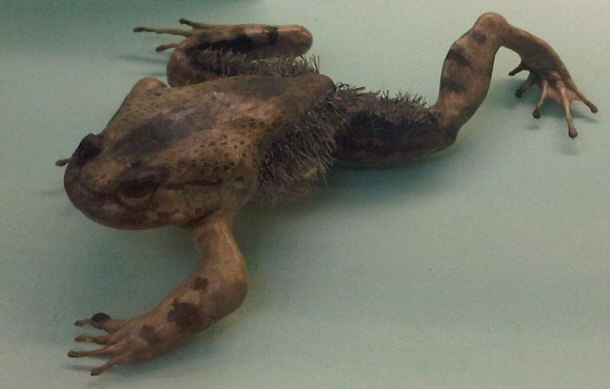
By Emőke Dénes (Natural History Museum in London),
via Wikimedia Commons
This mechanism would obviously cause great pain to the frog, but it has
developed for some reason. Science Now questions whether the protruding bones
could assist in climbing ventures on slippery rocks, since frogs are not exactly
known for getting into many fights. The broken bones would also take quite some
time to repair (several weeks on average), so that brings into question whether
such a drastic defense mechanism would take effect in a situation concerning
anything less than outright survival. This is certainly one of nature's more
gruesome and frightening defense adaptations.
3) Sea Cucumber
Like sea urchins, sea cucumbers are echinoderms. These simple aquatic animals
look like a long rubbery tube, and they contain one gonad branched at an end.
Sea cucumbers play an important role in the aquatic ecosystem, because they help
to decompose organic matter. Just looking at them, no one would expect anything
special from them defense-wise. Some sea cucumbers are in fact completely
vulnerable. Though they look practically lifeless, some species of sea cucumbers
have developed successful defense systems through evolution.
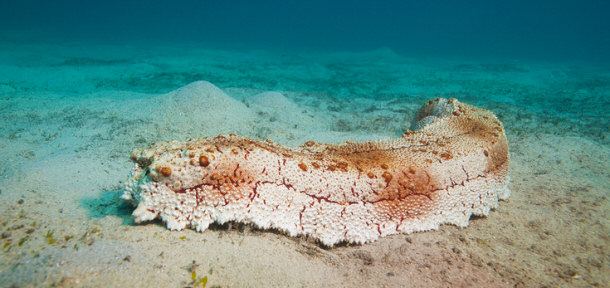
Some species have plate-like structures from their inner skeletal structure
that they can push outward when attacked to create a very effective armor.
Others even have the ability to eject their cuvierian tubules, which are very
sticky. The tubules come out of a tear in the sea cucumber, and they quickly
entangle the predator trying to attack. The cucumber will re-grow these tubules
in the period of a few weeks. Sometimes a toxin (similar to soap in chemical
structure) will be released along with the tubules, killing all life nearby the
sea cucumber. Tactics such as these have allowed sea creatures to be one of the
most abundant animals living on the sea floor.
2) Possum
Most of us have heard the expression, "playing possum." Well it is not a random
saying; it is in fact referring to the possum's main defense mechanism. This is
not in reference to the Asutralian possum but to the American opossum, known
colloquially as a "possum." Though possums (or "opossoms") may hiss, growl and
look vicious when they feel threatened, they are actually quite weak, and they
realize this. This scares the possum, which then turns to its next best
evolutionary tactic, which does not involve any kind of offensive measures at
all.

When a possum feels truly threatened, it will suffer an involuntary reaction
very similar to fainting in humans. It will
stiffen up, fall over, and play dead. It will leave its eyes open and even stick
its tongue out. Possums will roll their lips back and foam at the mouth, and
they will even secret an odor from their anus indicating that they have died.
They will go completely stiff, allowing people to poke them or pick them up
without moving. The faked death can last for up to four hours, depending on how
active the possum's defense mechanisms are. Baby possums often do not react in
time, because the trait develops as the possum matures. It may seem cowardly,
but it sure works. Most predators are uninterested in already-deceased prey.
1) Hagfish
As ugly as its name, the hagfish is an eel-shaped animal that is also special
because it is the only animal with a skull but no vertebrae. The jawless hagfish
looks like its species did 300 million years ago. That makes it a living piece
of history and also suggests that it did not need to evolve due to having a
top-rate defense system in the first place. Some are as small as a few inches in
length, while others have been over four feet in length. One thing they all have
in common is slime.
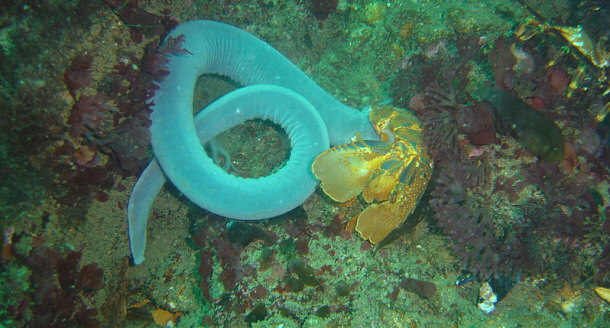
(WT-shared) Pbsouthwood at old wikivoyage wts [CC-BY-SA-3.0],
via Wikimedia Commons
A hagfish has one hundred glands along its body that can all release a thick,
slimy liquid all at once when the hagfish feels threatened. This thick slime can
be ejected at amounts of over five gallons at a time. While the predator is
distracted with the slime, the hagfish can tie its body into a knot and pull the
knot through to clean itself off and allow it to get away.
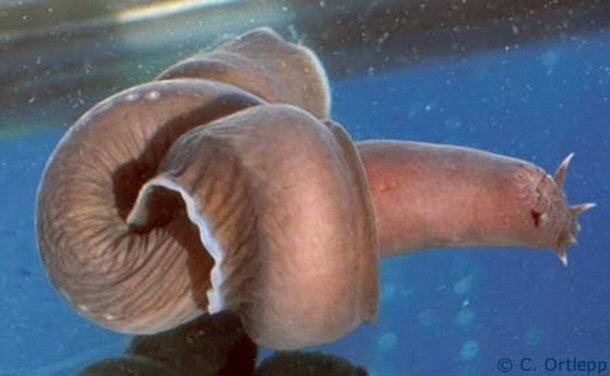
The thick, viscous slime works to disrupt the breathing of predator fish
through their gills by clogging them up. For such an ancient creature, this is
some seriously advanced evolutionary tactfulness. If not purposeful, then it
still benefits the hagfish either way by giving it time to escape. Basically,
the predator attacks, the slime comes out, the predator is too distracted to
bite, and the hagfish knots itself up and extracts itself from whatever
compromising position it may have been in.
Final Words
Animals can have surprisingly strange defense mechanisms. Some, like blood
shooting out of the eyes, are completely harmless and only work to scare
predators away. Others, like foul odor, are downright unpleasant and effectively
keep enemies at bay. Evolution is a marvelous process, and it is endlessly
fascinating to see how different species have adapted to survive in their
respective environments. It is especially interesting when species get creative
in their adaptations.
Nature
Top Lists:
15 Fascinating Facts about the Amazon Rainforest
15 Remarkable Facts About Bacteria
15 Remarkable Facts About Jellyfish
15 Little Known Facts About Elephants
15 Fascinating Facts about Earthquakes
15 Odd And Interesting Facts about Monkeys
Top 15 Myths about Snakes
Top 15 Myths about Horses
Top 15 Creepy Deep Sea Creatures
15 Unexpected Animals That Can Kill You Quickly
Top 15 Spider Myths
15 Beautiful Animals that are Now Extinct
Top 15 Most Amazing Snakes Around the World
15 Fascinating Facts about Snow
Top 15 of the World's Rarest Flowers
10 Most Emotional Animals
15 of the Most Venomous Creatures to Roam the Earth
15 Unusual Animal Defense Mechanisms
15 Unusual and Less Known Uses of Rocks
15 Unique Forest Creatures Less Known To Man
15 Interesting Facts About Time
15 Unknown Parasites You Never Knew Existed
15 Weird Trees Around The World
15 Wild Animals Deadly to Humans
15 Exotic Insects That Are Harmful & Deadly
15 Ridiculous Uses for Gold
Informational:
Preparing for a Disaster
Proof That We Are What We Are!
What is the Meaning of Life?
The Trend and Challenges Facing the Urban World
Creation Narratives and the Evolution Creationist Debate |